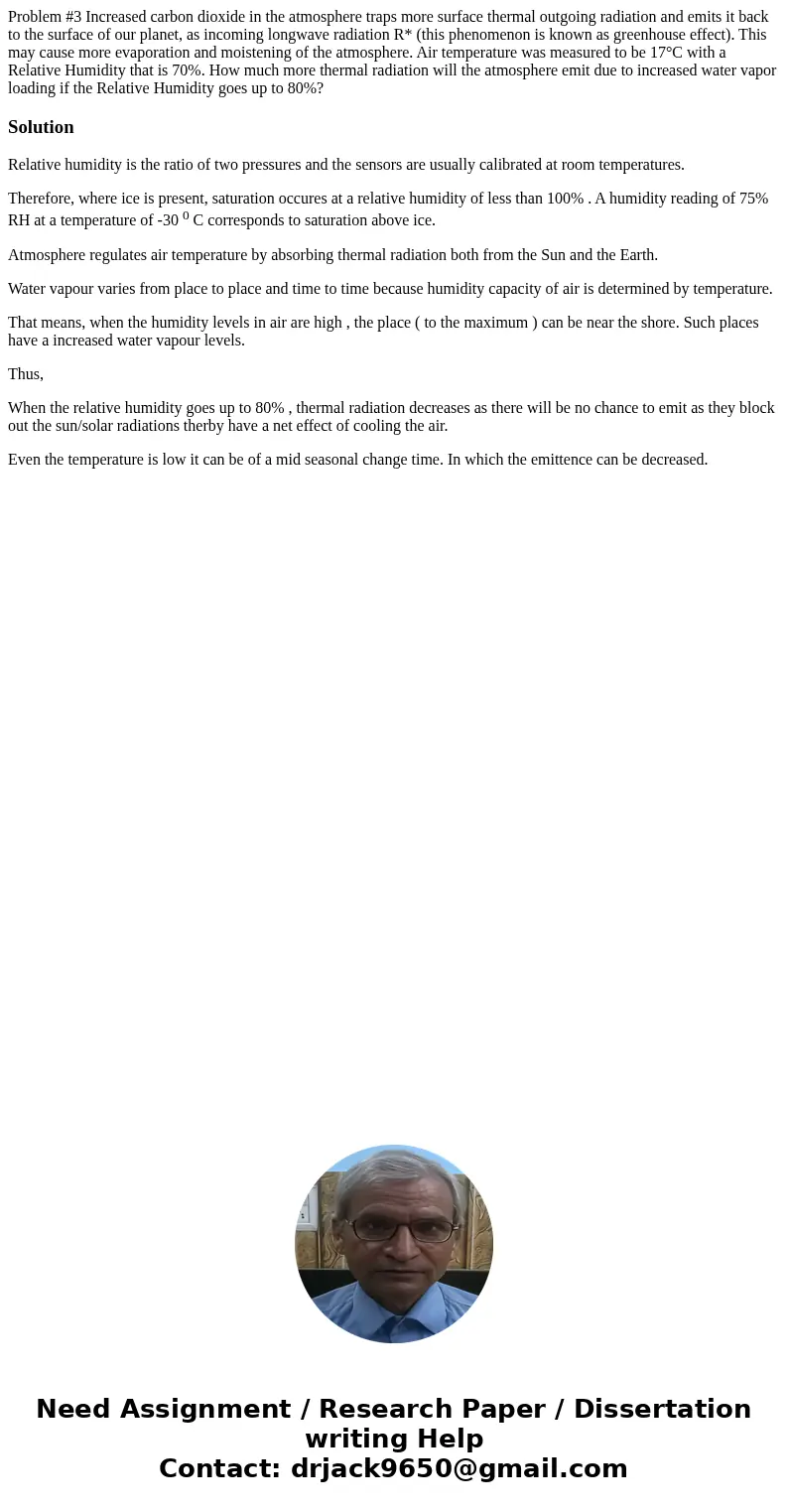Problem 3 Increased carbon dioxide in the atmosphere traps m
Solution
Relative humidity is the ratio of two pressures and the sensors are usually calibrated at room temperatures.
Therefore, where ice is present, saturation occures at a relative humidity of less than 100% . A humidity reading of 75% RH at a temperature of -30 0 C corresponds to saturation above ice.
Atmosphere regulates air temperature by absorbing thermal radiation both from the Sun and the Earth.
Water vapour varies from place to place and time to time because humidity capacity of air is determined by temperature.
That means, when the humidity levels in air are high , the place ( to the maximum ) can be near the shore. Such places have a increased water vapour levels.
Thus,
When the relative humidity goes up to 80% , thermal radiation decreases as there will be no chance to emit as they block out the sun/solar radiations therby have a net effect of cooling the air.
Even the temperature is low it can be of a mid seasonal change time. In which the emittence can be decreased.

 Homework Sourse
Homework Sourse